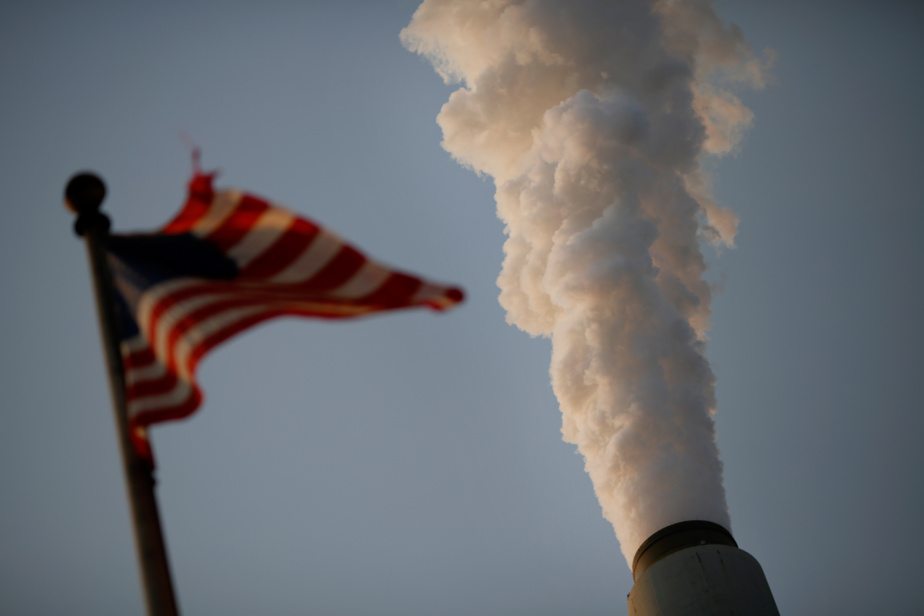(New York) The energy transition risks leading to very significant industrial job losses in the United States, according to experts who believe that the measures concocted by the authorities to lessen the shock may not live up to expectations.
Democratic President Joe Biden has injected, notably with the Inflation Reduction Act of 2022 (IRA), $1,200 billion for major investments intended for the energy transition, but also to help the regions which will suffer from it.
Climate initiatives that received a new lease of life during the 28e annual UN climate conference in Dubai this week.
The agreement adopted on Wednesday calls for “transitioning away” from fossil fuels (oil, gas, coal), with energy systems free of CO emissions.2 by mid-century.
The measures adopted by the American administration provide for subsidies for projects carried out in regions specializing in coal mining or for the conversion of factories – manufacturing electric vehicles instead of combustion engines for example – and even refineries oil companies.
The objective is to ensure “a strong and equitable transition to electric vehicles” and to maintain “high-quality jobs in regions where industrial infrastructure is currently located”, according to the Ministry of Energy.
Commitments which seem promising, but which do not convince everyone of their effectiveness. The financing provided under these programs is in fact channeled towards companies with growth plans, not towards employees whose factories are closing.
Young workers
For Gordon Hanson, professor at Harvard, the American administration’s measures will mainly help boost pro-climate production rather than help employees of companies affected by the energy transition.
He said many new investments in electric vehicles have been made in Southern states like Georgia and Tennessee with the recruitment of younger employees, contrasting with the traditional autoworker base in the industrial Midwest.
The United States could lose at least two to three million jobs over the next fifteen years due to the energy transition and the negative ripple effect, noted Mr. Hanson.
“We have to prepare for it to be disruptive,” he warns. “Otherwise, it’s going to look a lot like what’s happened to the industry with globalization and technological innovation over the last three decades, and it’s not going to be a pretty sight.”
The Department of Energy announced on November 27 an envelope of $275 million to finance seven projects in regions with coal mines or closures of coal-fired plants.
These funds must be used to manufacture wind turbines, electricity storage equipment and spare parts for electric vehicle batteries.
Alpen High Performance Products will use $5.8 million to purchase state-of-the-art equipment to increase its production of highly insulating glass.
This equipment is intended for a Colorado plant located near a coal-fired power plant that recently closed and another near Pittsburgh where mining jobs have disappeared, explains Brad Begin, its boss.
Union contact
“Demand is currently exploding,” he adds, planning to recruit around a hundred additional people thanks to changes to the construction code which favor high-performance glazing.
In its grant application, the company had indicated its intention to contact a Pennsylvania coal miners’ union about the vacancies.
While the number of workers moving from failing sectors to green jobs has increased, less than 1% of employees who left a “dirty job” landed a “green job,” according to a study by the Federal Bureau of Economic Research published in July.
E. Mark Curtis, an economist at Wake Forest University and co-author of the study, praised the attention to coal regions while emphasizing the challenges, particularly for older workers and those without degrees.
One reason for optimism, he says, is that “30% of employees leaving the fossil fuel industry are heading into manufacturing.”
“If the IRA generates manufacturing jobs in regions specializing in fossil fuels, it will be good for these regions,” he noted.
Mr. Hanson pleads for measures dedicated to vulnerable workers without being linked to the development of green energies.
It also suggests better funding higher education in struggling regions, where unemployment benefits should be strengthened and loans to small businesses boosted.
